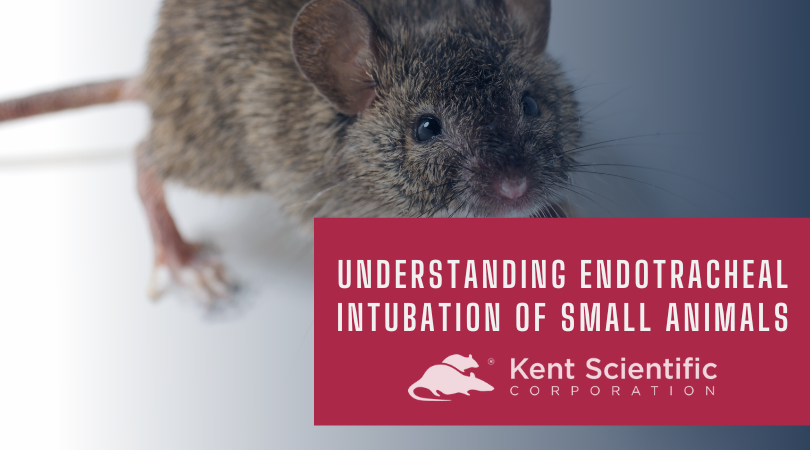Understanding Endotracheal Intubation of Small Animals
Posted on
Endotracheal intubation (EI) is a core component of in vivo studies on small animals . An endotracheal tube inserted through the mouth provides a pathway for delivering inhalation anesthetic drugs, and helps the animal to maintain airway patency while anesthetized. Additionally, tracheal intubation enables ventilatory support to be provided should the animal become unstable during surgery. Yet despite the routine nature of the procedure, small animal intubation remains a technically challenging prospect.
What is Endotracheal Intubation?
Intubation is a ubiquitous process in healthcare, medical, and research settings. It refers to the placement of a breathing tube through the nose or mouth and down into the trachea, to keep the airway open so that oxygen can be delivered by a mechanical ventilator. Endotracheal intubation specifically involves the insertion of a tube through the mouth, which can be extremely tricky and potentially traumatic for the animal or patient if the procedure is not carried out effectively.

In humans, an EI procedure is almost always performed under direct vision, meaning the larynx is first located using a laryngoscope before the tube is inserted. This is passed down into the lower portion of the trachea, midway between the larynx and the thoracic inlet. However, blind intubation of small animals remains common as it can be both costly and difficult to safely administer laryngoscopic support.
Complications of Small Animal Intubation
There are several anatomical and physiological problems when it comes to intubating mice and rats. They have a narrow mouth and a high glottal position, which can make it hard to expose the glottis (the primary valve between the mouth and the lungs) for intubation. Such a lack of exposure can lead to tube malpositioning, concomitant throat, laryngeal edema, tracheal perforation, hemorrhage, and excessive secretion of the trachea. Established methods of small animal intubation are subsequently unsatisfactory due to high failure rates.
A Better Method of Intubating Small Animals
Significant investment and research have finally been levied to improve small animal intubation and to provide a novel method tailored to lab animals. Endotracheal rat and mouse intubation kits are specifically designed to provide a safe intubation platform for in vivo and survival studies. While larger animals are typically placed in sternal recumbency during tracheal intubation, EI kits for mice and rats allow them to be positioned in dorsal recumbency on an inclined plate to improve access to the upper airways. This stand may feature an adjustable head positioning component to facilitate safe intubation.
Want to learn some more fundamentals? Read our article on The Basics of Physiological Monitoring or Rodents.
At Kent Scientific, we provide small animal intubation products which have been optimized for use with mice and rats. Our EI kits come with a suite of components to assist with initial intubation and anesthesia delivery, such as an integrated anesthesia mask, an independent neck positioner, and a fiber optic light or better visualization during tube insertion. You can see the procedure using our kit here: https://www.kentscientific.com/video-library/intubating-a-mouse-using-kent-scientific-intubation-kit/